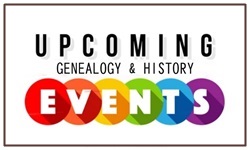500 … Every Little Bit Helps
Well I did it, I have finally made it to 500 lines of text corrected on Trove (well, acutally a little more as you can’t just correct half of an article). I know in the whole big scheme of things it’s just a drop in the ocean, but hey, it’s still 500 lines that otherwise may not yet be corrected.
Now anyone who is a regular “Trover” (do you like my new word?), will be familiar enough with the picture below as it is a screenshot of the Trove newspapers homepage. For those who may not be so familiar … let me tell you that Trove is FREE, and you can search by keyword/s, or browse by area, or by paper. As at 25 June 2013 there are 10,006,450 digitised newspaper pages online consisting of 101,614,442 articles available to search.
Australian Birth, Death and Marriage Records
It goes without saying that genealogists are after BDM (Birth, Death and Marriage) records, and why wouldn’t we be? They give us all sorts of interesting clues: parents’ names, place of birth, what someone died of, family members as witnesses or informants. Seriously they are truly genealogy gold!
One thing everyone who is new to researching Australian records needs to know is that each state has it’s own records, so there is no one-place to search for all Australian BDM records, though there are some partial ones. So while it seems a little annoying that we have to check each states records one-by-one, be thankful that Australia only has six states as opposed to the 48 counties of England, or the 50 US states. 😉
Trove Tuesday: If Only They Were All Like That
Ever since Amy Houston from the Branches Leaves and Pollen blog started her Trove Tuesday theme last year, it has been something that I wanted to participate in, but time hasn’t permitted me until now. So for my very first Trove Tuesday post I would like to share with you the amazing obituary I have found for Edward Curran.
Let me state that Edward isn’t anyone that I am related to, I was simply looking him up when I was helping a friend with some further leads. And I must say that I’ve seen obits before, but this one is seriously good stuff “if only all obituaries were like this, it would certainly answer quite a number of questions”.
Facebook and Genealogy: 100 Links for Australian Researchers
There is no doubt that Facebook is THE popular to keep you connected to family and friends. But do you realise just how important it can be for your genealogy? Facebook and genealogy … really? Absolutely!
You can find genealogy related groups online to ask your how-to questions, you can keep up with what your local societies are doing, you can help track down your digger ancestors, ask for help identifying those old photos you’ve inherited, find out the latest publications from companies, find a researcher and so much more.
Facebook is there to be used, so why not use it to your advantage.




